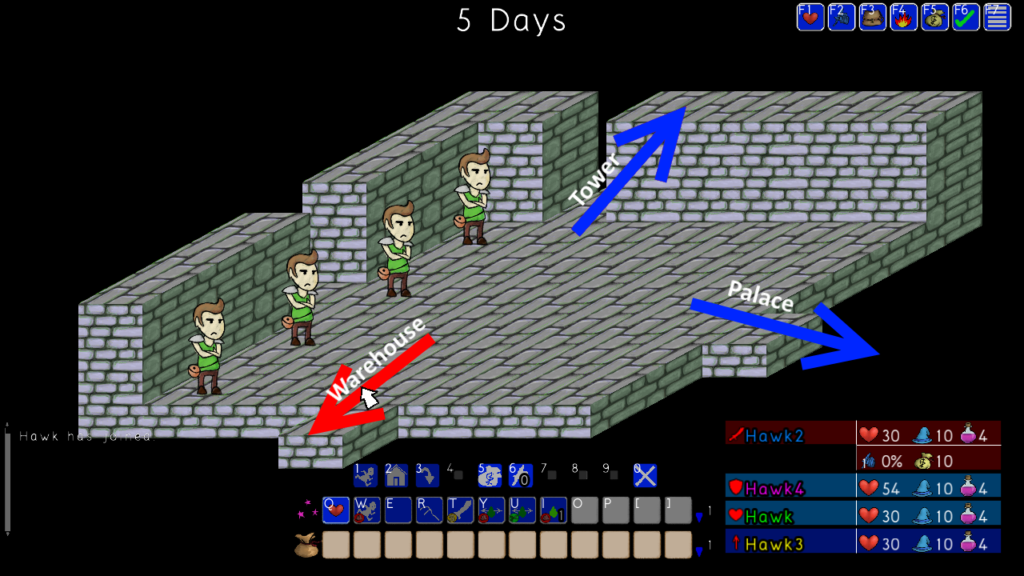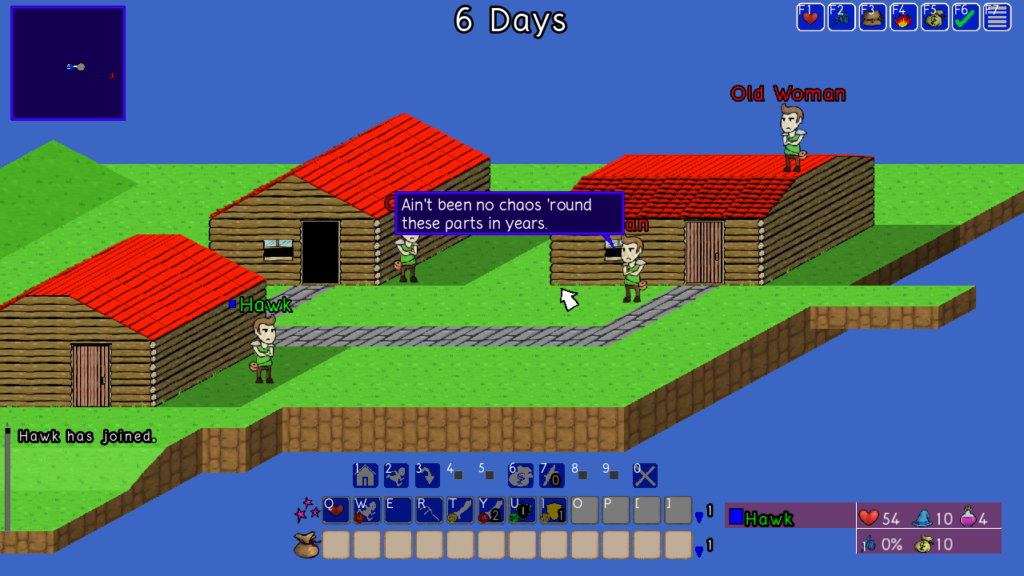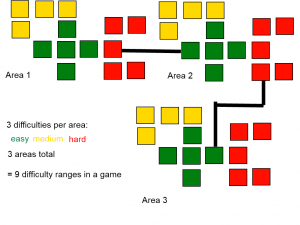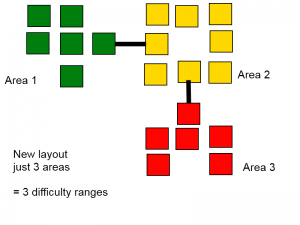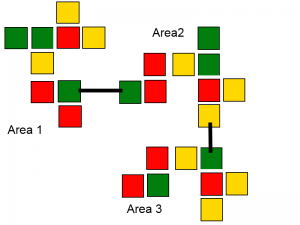Changes
- Added 3 new scenarios, totaling 4 (out of a goal of 10).
- Several new classes, many balance changes, removed classes, etc.
- Changed role system: players can now have any combination of roles instead of being locked into 1 tank/damage/heal/support per player.
- Designed traps to fit in the new map style (triggering when moving away from them, providing a disarm opportunity).
- The RPS(RockPaperScissors) that an enemy is using is now usually visible, though some enemies hide it.
- Monster HP is now visible.
- Streamlined quest scripting conditionals to be consistently used everywhere in the data instead of separate ones for quests/battle.
- Stabilized data editor to no longer crash every 20 minutes (after ignoring this for years it ended up being a trivial error).
- Added an autopatcher for tester convenience.
- Continuing UI layout tweaks.
Test Results
Testers seem to be actively enjoying the game at this point. One who hasn’t tested in several years was surprised by it, even. Various UI nuisances are still a major hindrance, though. There are also balancing factors that are starting to crop up. One factor is the move from fixed role counts to free roles makes battles far more challenging to balance- all-damage parties need to be hindered by no recovery, all-tank parties need to die fast enough to deter players from getting into miserable battles of attrition, etc. This is pretty solvable problem, though the game is harder to balance in this regard since the system is deliberately built around avoiding focus fire (whether through aggro build up or front/back lines).
My bigger concern when it comes to quality at this point is the writing. Testers don’t give much direct feedback on it, and my own gut says it probably sucks. It won’t kill the game, but I wish I could find a means of getting feedback on it so I could improve.
With this test, “is this game good?” is no longer the driving concern (for the first time). It is finally just, “can we get this done fast enough?” (with a side of “can we make it polished enough in that time?”). This should be a relief, but it doesn’t feel like one. If anything there’s more pressure now because we’ll be wasting potential if we don’t pull this off.
Next
While my original plan was to focus entirely on content until all of it was complete (for art production efficiency), I seem to be making a pit stop of cleaning up the UI further since we have a boatload of tester feedback on it now (I honestly didn’t plan on running a test this early but, uh, the testers wanted to play some more). In some ways this is good because we’ll have more time for testers to give us feedback on the UI than if we waited longer (and get more feedback focused on the content instead of the UI). But it also feels really bad in terms of slowing down production. No way to win.
There’s also a content question that I’m a little worried about. As it stands I can either make the average scenario length 1hr or 2hrs. The issue is that the number of battles in a 1hr scenario are so few that it pretty much has to be linear to work. While testers haven’t complained about the 2hr scenarios, the limited lives nature of the game makes me reluctant to ship it with scenarios where you can lose 2hrs worth of progress. Given our incredibly limited amount of time I’m inclined just to have a mixture of both scenario types rather than having to edit down existing scenarios (plus the brisk linear scenarios are good palette cleansers between beefy nonlinear ones). Things like simultaneous turns may reduce length as well.
